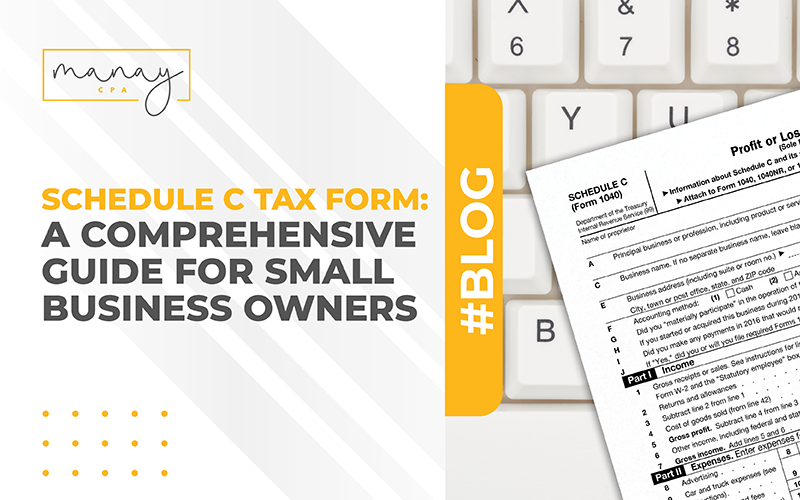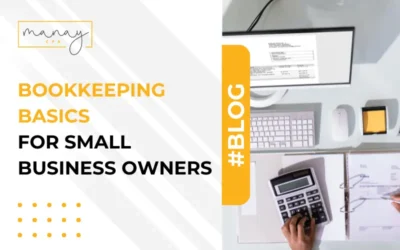Schedule C Tax Form: A Comprehensive Guide for Small Business Owners

As a small business owner, you have much to track, including taxes. One tax form that you may need to fill out is the Schedule C form. While it may seem overwhelming initially, understanding the Schedule C tax form is critical to ensure you file your taxes correctly and avoid penalties. This form reports your business’s profits and losses to the IRS. While it may seem like a simple form, there are many intricacies to consider when filling it out, and mistakes can be costly. In this comprehensive guide, we will walk you through everything you need to know about the Schedule C tax form, from who needs to file it to how to maximize your deductions.
Table of Contents
ToggleWhat is the Schedule C tax form?
First things first, let’s define what the Schedule C tax form is. The Schedule C tax form, also known as the Profit or Loss from Business form, is used by sole proprietors or single-member LLC to report their business income and expenses to the IRS. This form is part of your tax return (Form 1040) and is used to calculate your net profit or loss from your business. It’s important to note that you must file a different tax form if you have a partnership or multi-member LLC.
Who needs to file Schedule C?
If you are a sole proprietor or single-member LLC, you must file a Schedule C tax form. This includes freelancers, independent contractors, and small business owners who are the only owner of their businesses. It’s important to note that submitting a Schedule C despite not generating income but having business-related expenses is a smart option. You could deduct those expenses from your other income on your tax return, which might lower your overall tax obligation. However, it’s always best to consult a licensed tax professional to ensure you meet all the necessary tax requirements.
How to fill out Schedule C: Step-by-Step Guide
For several small business owners, filling out a Schedule C can be daunting, especially if you need to become acquainted with the appropriate tax legislation and rules. Here’s a step-by-step guide to help you through the process:
- Gather your business income and expense records for the tax year.
- Enter your business name, address, and taxpayer identification number (TIN) at the top of the form.
- Fill out Part I, which includes your gross receipts or sales for the year.
- Fill out Part II, which includes your business expenses for the year.
- Calculate your net profit or loss and enter it in Part III.
- Transfer the net profit or loss to your tax return.
While this step-by-step guide can help you fill out your Schedule C independently, it is vital to consider that IRS may conduct an audit due to inaccurate or incomplete filing and impose fines, interest, or both. While completing this form on your own is doable, it’s critical to remember that working with a tax professional is frequently preferable because they can ensure that your taxes are submitted accurately and following all relevant rules and regulations.
What are the common mistakes to avoid when filling out Schedule C?
While filling out the Schedule C tax form is relatively straightforward, there are some common mistakes to avoid. One of the biggest mistakes is failing to keep accurate records. It’s essential to keep detailed records of all your business income and expenses throughout the year to ensure you report everything correctly on your tax return. Accurate reporting of your income and expenses might be challenging without good bookkeeping. You could overlook crucial details or miss deductions, leading to an audit. Another common mistake is failing to claim all your deductions. Many small business owners are unaware of all the deductions they can claim, which can result in paying more taxes than necessary.
By collaborating with a professional bookkeeper, you can stay clear of these common mistakes and ensure that company records are correct and updated. A bookkeeper may assist you in maintaining organization, monitoring your revenues and expenditures, and assuring you deduct everything allowable. With their assistance, you can prevent penalties by filing your tax returns on time.
How to maximize deductions on Schedule C
As a small business owner, maximizing your deductions can reduce your tax liability and save you money. Here are some tips for maximizing your deductions on the Schedule C tax form:
- Keep accurate records of all your business expenses throughout the year.
- Claim all applicable deductions, including home office, vehicle, and travel expenses.
- Consider hiring a licensed tax professional to help you identify all the deductions you may be eligible for.
- Keep up-to-date with changes to the tax code to ensure you are taking advantage of all available deductions.
What are the deductions you can claim on Schedule C?
The Schedule C form allows you to claim various deductions for your business expenses. Some of the most common deductions include:
- Home office deductions: If you work from home, you can deduct some of your home expenses.
- Travel expenses: You can deduct expenses related to business travel, such as airfare and hotel costs.
- Equipment purchases: You can deduct the cost of equipment purchases, such as computers and office furniture.
- Insurance premiums: You can deduct the cost of insurance premiums, such as health and liability insurance.
- Advertising and marketing expenses: You can deduct advertising and marketing expenses, such as website design and social media advertising.

Schedule C vs. other tax forms: Which is right for your business?
While the Schedule C tax form is the most common for sole proprietors and single-member LLCs, there are other tax forms you may need to file depending on your business structure. Here’s a breakdown of some of the other tax forms:
- Schedule E: Supplemental Income and Loss – utilize this tax form to report income or losses from rental properties, partnerships, trusts, estates, and etc.
- Schedule F: Profit or Loss from Farming – the income and expenses involved with farming activities are reported using this schedule.
- Schedule SE: used to report self-employment tax for individuals who are self-employed.
Your unique situation, sources of income, and deductions will determine the precise schedules needed for your tax return. To establish which schedules or tax forms are required for your tax return, it is advised that you speak with an accountant or tax professional.
How to file Schedule C with your tax return
Once you have filled out the Schedule C form, you will need to file it with your personal tax return (Form 1040). Here’s how to do it:
- Fill out Schedule C as described above.
- Transfer your net profit or loss from Schedule C to your tax return.
- File your tax return by the deadline.
When filing your tax return, you must include your Schedule C form with your tax return. Make sure to review your form for accuracy and completeness before filing. Consider working with a licensed CPA to ensure that your taxes are filed correctly and to answer any questions you may have.
Schedule C FAQ
Here are some of the most common questions about the Schedule C tax form:
What is the deadline for filing Schedule C?
The deadline for filing Schedule C is the same as for filing your tax return (Form 1040), typically April 15th. If you need more time to file, you can request an extension.
Can I deduct business losses on Schedule C?
Yes, you can deduct business losses on Schedule C up to the amount of your business income for the year.
What is the penalty for filing Schedule C late?
If you fail to file your Schedule C tax form on time, you may be subject to a penalty of 5% of the tax owed per month, up to a maximum of 25%.
In conclusion, understanding the Schedule C tax form is crucial for small business owners. By following this comprehensive guide and consulting with a licensed tax professional, you can ensure you file your taxes correctly and maximize your deductions. Remember, while it’s essential to keep accurate records and take advantage of all available deductions, it’s always best to seek the guidance of a licensed tax professional to ensure you are meeting all necessary tax requirements. Schedule a free consultation with Manay CPA team today. Click here to schedule your free consultation now.

Published on: 28 March 2023
Last updated on: 05 August 2024
Manay CPA is a reputable, full-service CPA firm based in Atlanta, Georgia. Founded in 2001, we provide comprehensive accounting and tax solutions to individuals and businesses across all 50 states.





